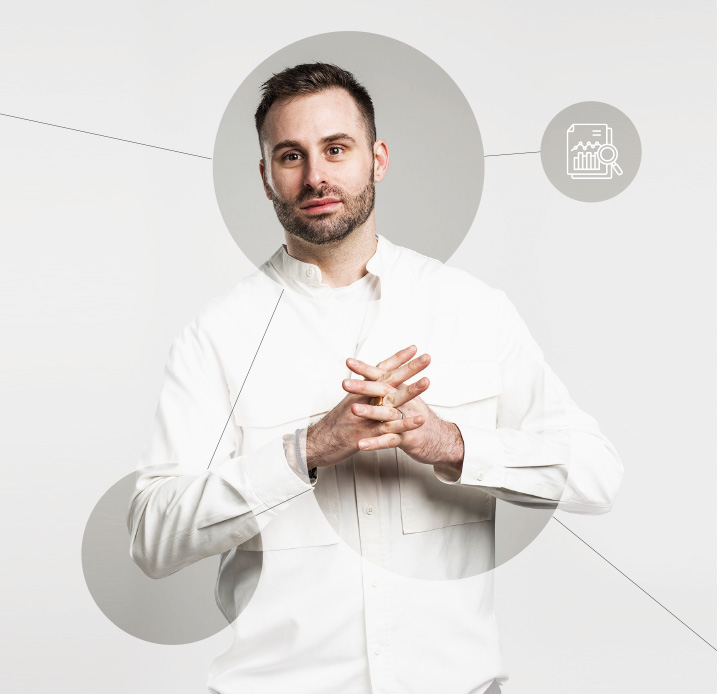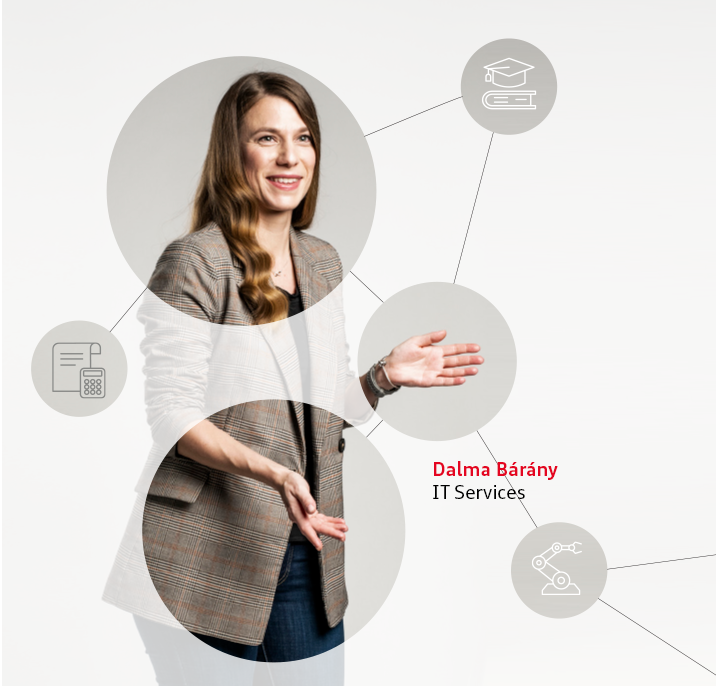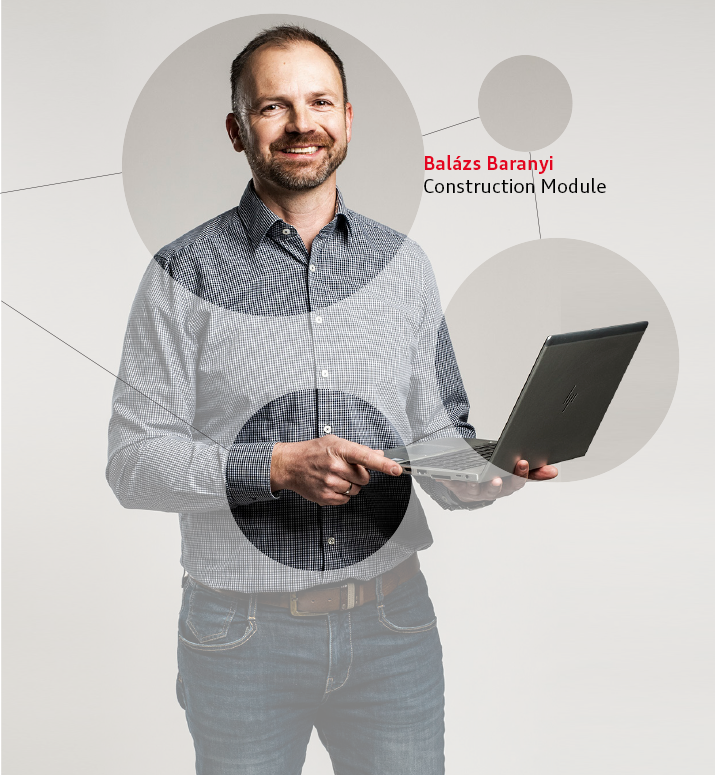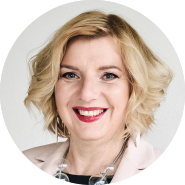
Plugged into the network
Flexibility, openness to new ideas, constant learning, and fast adaptation. These are the qualities that our colleagues and – through them – the organisation as a whole need to possess in order to remain successful and continue to evolve over the long term. As an organisation with a continuous learning culture, Audi Hungaria places significant emphasis on competency development for its employees. The tools of network research can be used to help perfect this process. Let’s see how!
Progress and related transformational processes are typically initiated by people who are driven by their own sense of purpose and internal motivation to learn new things. They handle change proactively, and are capable of inspiring others with their commitment to moving forward. At the same time, these processes cannot be taken for granted. This is why the company has a huge responsibility to recognise these efforts and encourage its colleagues to share their acquired knowledge and skills with other members of the community. Anyone can have resources and potential that they have not yet tapped into, but which an organisation may need. For the successful operation of a company, it is essential for the organisation (it is important to note that an organisation doesn’t just mean a collection of workplaces or an organisational chart) to change and evolve according to current needs. This impacts workplaces and the entire staff in a complex way. “Within Audi Hungaria, the impact of these processes has manifested itself in several areas in recent years – just think of the transition from internal combustion engines to electromobility. Or even the marked shift towards the world of services with the Shared Competence Center, where employees who previously worked in another area are now engaged in providing services. The Audi Academy is an institutionalised part of the knowledge and skills development that enables transformation. We are also introducing new methods within the HR organisation in order to achieve the best possible results. For example, we are using network analysis to examine the data of areas related to personnel, and researching what further opportunities lie in our community,” says András Tóth, Head of Organisational Development, who believes this will open the door to a new and exciting area. Together with network researcher Dr Milán Janosov – who is actively supporting Audi Hungaria’s organisational development work using the tools of his own discipline – András discusses the relationship between transformation, development and network analysis, as well as their practical applications.
Transformation at Audi Hungaria
This term summarises the changes required in the life of our organisation. These could apply to processes, products, behaviour, or even the organisation itself. Regardless of the area, however, they have a common characteristic: their implementation and realisation are necessary to achieve objectives and are vital to the future of the company.
The true strength of network science lies in the fact that it is a very widely applicable approach.Dr Milan Janosov

AUDI: Progress and an openness to change are fundamental elements of transformation. This could be within a familiar area, or somewhere new. Was it common for our colleagues at Audi to make a career change in 2023?
András Tóth: There have been hundreds. We have plenty of people changing their careers in recent years, and not necessarily only due to the transformation. Becoming a leader, for example, is absolutely part of the process.
AUDI: Why do people change career paths?
András: One reason is the constant need to learn, to search for challenges, though I’m sure there are also generational differences. It also depends on how curious someone is – how soon they reach the point where they know everything in a given area from top to bottom, have tried everything, and are ready to look for new challenges.
AUDI: The organisation can consciously use the power of change. Network analysis, which is an innovative and successful method, can help with this process. But what is network analysis, exactly?
Milán Janosov: Network science has mathematical origins, with graph theory, that date back nearly 300 years. It gained increasing popularity in the middle of the 20th century, and also became an area where Hungary excelled, thanks to our country’s outstanding graph theorists. Around the same time, another network-related wave took off in the field of sociology. The process culminated in the late-1990s, and this influence can still be felt today, mostly thanks to computer scientists and physicists. In terms of computer science, networks can be observed in almost every moment of our everyday lives, from social media apps like Facebook and Instagram to the recommendation algorithms behind Netflix and Amazon, not to mention Google’s search engines. But networks are also emerging in everything from brain research epidemiology, urban development, and even HR!
The true strength of network science lies in the fact that it is a very widely applicable approach. The insight that network analysis provides means it is a promising tool for innovative large companies in helping them solve their various challenges and changes in an efficient, transparent, objective, quantifiable, and data-driven way. And this brings us to organisational development. Here, organisational network analysis provides an accurate operational impression of the company’s formal and informal organisational structure, which may be designed with a top-down approach, but is actually built from the bottom up.
AUDI: It may seem obvious, but let’s take a closer look: why did Audi Hungaria decide that it was a good idea to apply network research and Milán’s expertise in particular to the planning of transformational processes?
András: It was clear that we wanted to move in the direction of data-based network analysis. A pronounced effort to pursue quality was integral to the entire company and our own particular area. Milán and his team are key figures in this field – they were the clear choice. This also demonstrates the value of HR: that we are partners of the company and not simply service providers. If we see that Audi Hungary needs something or could benefit from it, then we have the courage to try it.
We mustn’t forget that even though we are a company, and profit is our main goal, building the community is also an extremely important objective. One significant step forward in our own system is that we now work much more closely with both our leadership and our specialists.András Tóth

AUDI: Now that this has been done, we can talk about your own experience. What does network research in a company look like?
Milán: Firstly, a company has an official organisational chart, which designates the processes and the main directions of how it should work, together with the vision that management has for the company. This imagined, ideal state can be easily examined with the help of network research methods. With this kind of organisational mapping, we analyse, for example, questionnaires or even emails and meeting invitations in order to visualise real operational and relational processes. With this kind of mapping work, the true relationships and the extent of the central role of nodes (colleagues) emerge – as well as the absence of these things. Of course, network science alone is not sufficient to accurately establish such a data-driven diagnosis – you also need specialists and organisational developers who have insight into the company’s operation, and who can assemble the complete picture together with the network researcher. This makes it possible to identify, for example, employees who are not actually in senior positions but who play a key role in driving the organisation forward. Just as it can become clear how the connection between two departments might be incomplete or one-sided, and how far this is from the expected strength of connection.
András: The need to examine our own network, that of HR, can also be traced back to this. We thought that perhaps some people should work together more, or more closely, to help make our processes more effective. The culture of an organisation is largely what determines how it will function. We can compose any kind of organisational chart we like, but if the network works differently in reality, then that will be the guiding principle. It is also important to understand that if we want change, it cannot be achieved with the same approach that we have used over the last 30 years. We need to understand the reasons behind the changes and why they are necessary, and then we must consciously champion them. Experience has shown that if the organisation works interactively with its employees and understands the areas affected by change, progress will be more effective.
AUDI: How can network research help us recognise and then proactively and consciously use synergies within the company?
Milán: There are numerous ways, which I would like to illustrate with a simple example. We have developed an algorithm that identifies pairs of colleagues who have a good chance of forming a lasting professional relationship in the future. The criteria for this algorithm were built around two factors. Firstly, we examined their actual technical work and looked for colleagues whose professional knowledge complemented each other in some way – their statements indicated they are skilled in various fields or work processes. The other part of the study focused on personal, private interests – we asked the participants what subjects interested them in their free time. The algorithm then combined the answers and examined all possible co-worker pairings, before matching people who were complementary from a professional point of view and similar in a personal sense. The hypothesis behind this logic is that if two people are interested in the same things in their spare time, they are more likely to find common ground as individuals. This means that it might be easier to establish a more lasting relationship, while their complementary professional competences suggest they will also be able to solve more difficult problems together.
AUDI: This explains the mapping of connection points. But how can the training and then transformation of employees help the organisation become more network-aware?
András: It is essential for people to spend quality time together in order to develop good cooperative relationships. The company has around 12,000 employees. If we look at any group of staff members – in HR, for example, there are around 240 people, or among management, more than 300 – it is difficult to get an idea of who is doing what during working hours. Yet there is a need to do this: we are all part of a community. Investigations related to organisational culture and regular job satisfaction reports show that while our employees are confident in terms of hard facts, they would like to strengthen their soft skills. When looking to maintain a balance between the two, we mustn’t forget that even if we are a company, and profit is our main goal, building the community is also an extremely important factor. This means we shouldn’t necessarily focus exclusively on professional development. We can also be confident that the human side is another strong foundation to build on that can help determine the company’s success.
AUDI: Could you tell us about some of your own experiences? How have the above processes impacted Audi Hungaria’s corporate culture?
András: We ran anonymous tests, in compliance with the strict data protection legislation. At first, we just wanted to see if it was possible to identify people in cases where the algorithm recommended that they work together, but we deliberately didn’t identify them by name. At the same time, the results still show that there remains significant potential to develop closer working relationships within the company. In the longer term, our plan will be to look back over time and examine how much our network has changed in the preceding period as a result of consciously focusing on this area. It has been a significant step forward in our own system: we now work much more closely with both our leadership and our specialists. We consciously connect with our colleagues, but also leave them alone to work together. Our goal is thatthe leader shouldn’t always have to tell us how to get from point A to B. Instead, we should listen and incorporate what our colleagues say and represent. By involving people and creating an atmosphere of trust, we can shape the future together – often, this is how we can find a truly effective solution.

The world opens up
Dalma began working in the personnel services part of the HR division in 2013, where, among other tasks, she supported payroll processing. Although she enjoyed her work, she felt she had run out of avenues for professional development. In the meantime, she completed a bachelor’s degree in business informatics and grew increasingly interested in the world of IT. “When I was preparing to make a change, I wanted to be able to work with SAP in my new area, too, just with different privileges. I wanted the world to open up more, to gain a more comprehensive overview of how the company works, and to have the chance to discuss things with colleagues working on different sites within the group.” Dalma is still learning in her new position, and is currently mastering the SAP Transportation Management Platform. She enjoys being able to discover a new area where she can start everything afresh. She is greatly helped by the attitude of her colleagues, who support her in every way: whether it’s with the training or tools required for her work, or the job environment, she can count on them to help her progress on her individual career path.
From the Tool Factory to the Powertrain Plant
Balázs’s entire career with Audi has been marked by transformation. He joined the company in 2008, managing several projects before he built the first generation of an exclusive series production line in the Tool Factory and also worked on the product ramp-up of the RS4 and RS6 rear doors. He was involved in integrating the Lamborghini Aventador, and also led the construction of the A3/TT robot training cell in the Project Training Centre. Balázs then became the professional coordinator with the production line planners, before a change of perspective when he moved to a new area, the Body Shop, and worked for two years as the quality manager for bodies in white. Armed with vital experience gained from large-scale production, Balázs then returned to the Tool Factory’s exclusive series production, where further large-scale work followed, including in managing the project of expanding the Tool Factory’s area. “After that, I felt that I had covered everything I could in my area on the professional side, so in the spring of 2023 I switched to engine development, where I joined the internal combustion engine family as an international design coordinator.” For Balázs, having a variety of tasks is important, as it allows him to get to know other areas as well. He believes that in addition to professional depth, being effective depends on understanding the work of others. This is why after completing a successful project, he always looks for a new challenge. At Audi Hungaria, he has both the opportunity and the incentive to do so.


“With 12,000 colleagues, Audi Hungaria is one of Hungary’s largest employers. Our company means far more than that to our colleagues, however – it is a home that they can depend on. We are responsible for our colleagues, and will support them in the new era of electromobility. The world of work is changing at an incredible rate, and we require a bold new future-orientated mindset. We are leading our company with innovative new initiatives – built on close cooperation between individual areas of expertise and our colleagues – in the direction of sustainable development, which will help us prepare in the best possible way to manage the complexity of the future.”
Kinga Németh
Member of the Board of Management Human Resources and Organisation
